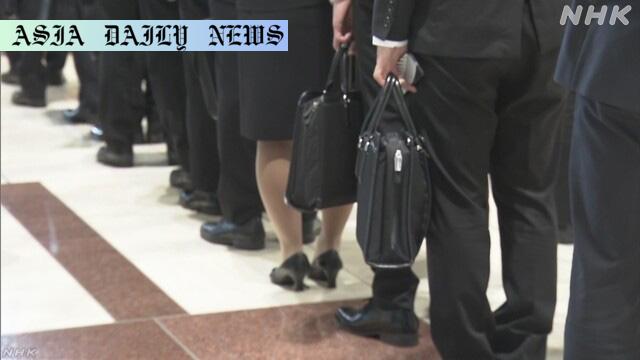Employment Rate: Japan’s university graduates achieved a 98% employment rate this year, marking the second-highest in three decades.

Remarkable Achievement in Graduate Employment Rate
The employment market for university graduates in Japan continues to display robust strength, with the latest figures indicating a record-breaking trend. According to a survey jointly conducted by Japan’s labor and education ministries, the employment rate for university graduates reached 98% as of April 1. This figure marks the second-highest rate in nearly three decades, demonstrating the resilience and vitality of the Japanese economy despite ongoing labor shortages.
The survey collected data from 6,250 students who graduated in March from 112 educational institutions, including universities and technical colleges. While the overall employment rate declined by a marginal 0.1 percentage point compared to last year’s record, it still represents remarkable progress. For female university graduates, the employment rate rose slightly to 98.5%, while the rate for male graduates dipped to 97.6%, highlighting some disparities between genders.
Understanding the Factors Behind the High Employment Rate
One of the primary drivers of this trend is Japan’s ongoing labor shortage, which has led companies to aggressively recruit fresh graduates. The labor ministry emphasized the persistence of a sellers’ market, wherein job seekers have the upper hand due to high demand for talent. Additionally, the steady economic recovery post-pandemic has further contributed to this trend as companies seek to strengthen their workforce.
While university graduates achieved an impressive employment rate, graduates from technical and vocational colleges also performed well. The employment rate for the latter was recorded at 99.6%, reflecting the high demand for specialized skills in the technical fields. However, both college and technical college graduate employment rates fell by 0.4 points year-on-year.
Government’s Role and Future Commitments
The Japanese government has played a crucial role in supporting this positive employment trend. Labor minister Fukuoka Takamaro lauded the achievements while acknowledging the need for continued support. He mentioned that nationwide job placement offices remain committed to assisting graduates who have not yet secured employment. Furthermore, a range of government programs and initiatives aims to connect job seekers with prospective employers.
Challenges persist, particularly for those with less marketable degrees or from smaller institutions. To address these gaps, policymakers are exploring avenues to diversify opportunities and ensure inclusivity in the job market. The emphasis is not only on quantity but also on quality, with efforts to align educational outcomes with the skills demanded by employers.
Looking Ahead: Sustaining the Positive Trend
Maintaining this upward trend requires a collaborative effort from all stakeholders. Educational institutions must continue to equip students with relevant skills, while companies need to invest in training and development. Policymakers should design policies that encourage innovation, entrepreneurship, and labor mobility.
While Japan celebrates this remarkable milestone, attention should also be directed at addressing the slight decline in male employment rates and the potential impact of an aging workforce. Long-term strategies will need to focus on sustaining economic growth while promoting gender equality and diverse career pathways for graduates.
Commentary
Celebrating a Milestone in Japan’s Employment Landscape
The latest figures on Japan’s graduate employment rates are nothing short of remarkable. Achieving a 98% employment rate, the second-highest in nearly three decades, is a testament to the country’s strong economic recovery and commitment to workforce development. It is heartening to see a labor market where opportunities abound for young graduates, a scenario that many countries can only aspire to replicate.
Navigating Gender Disparities and New Opportunities
While the overall employment rate is impressive, it is crucial to delve deeper into the nuances. The slight dip in male employment rates compared to the steady rise for female graduates raises important questions. Are industries evolving in a way that favors specific gender demographics, or are there systemic barriers that still need to be addressed? These are pertinent areas for policymakers and businesses to explore as they aim to create a truly equitable job market.
The Role of Education and Policy in Shaping Outcomes
Educational institutions and government policies have played a pivotal role in shaping these outcomes. By aligning academic curricula with market demands and offering robust support systems for job placement, Japan can serve as a model for other nations grappling with graduate unemployment. The initiatives from job placement centers, coupled with targeted support from the government, ensure that even those who are initially left out have a shot at gainful employment.
The Road Ahead: Sustaining and Improving Success
While the achievement is worth celebrating, Japan must remain vigilant. As labor shortages continue, the potential for skill mismatches and over-reliance on specific industries remains a concern. Investments in innovation, gender inclusivity, and reskilling programs will be crucial in sustaining and improving upon this success. Japan has demonstrated that robust employment rates are achievable, but the journey does not end here. Continuous adaptation to a changing global economy will be essential for lasting progress.


